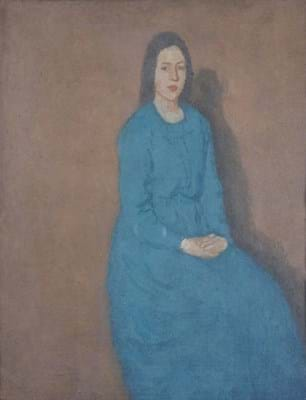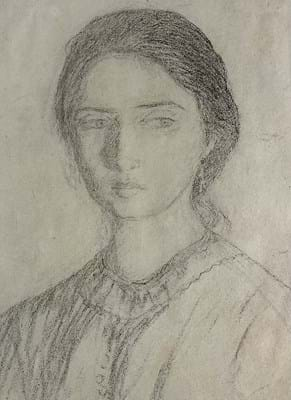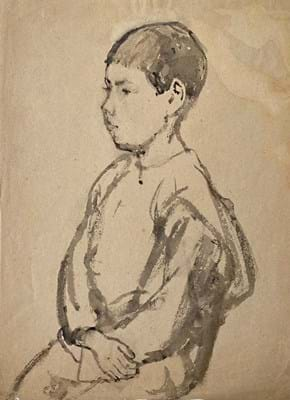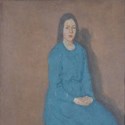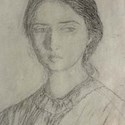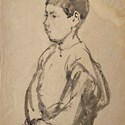Contemplative and yet confronting, A Young Woman in Blue is a classic example of Gwen John’s work. The Welsh artist specialised in pictures of women in interiors, creating intimate often quiet pictures that still reflected the personalities of her subjects.
These, and a few of her well-known cat pictures, comprise most of an exhibition on John (1876-1939) at Martin Tinney Gallery this summer (June 15-July 16), part of its 30th anniversary celebrations.
A Young Woman in Blue is one of a few oil paintings offered in the show. Fewer than 200 of her oils exist today, many now in public collections, making these rare finds. Regularly pulling in six figures on the open market (the top price according to Artprice by Artmarket is £264,642 for an oil at Sotheby’s in 2014), they are available at the show for up to just under £500,000 (works on paper are from £3500-65,000).
It is part of a mission to right the market for John.
“I have constant requests from clients for her work and there seems to be an understanding that she has been seriously undervalued in the context of current values for major 20th century British artists,” says Tinney. “With the increasing interest in women artists she is seen as an important figure who, at a very young age showed her independence by moving to live and work in France.”
Her independent spirit was long overshadowed by the men in her life. Her younger brother Augustus John (1878-1961) was regarded as one of the most important artists in Britain in the early 20th century. Arriving in Paris in 1904, she modelled for Auguste Rodin (1876-1939) and the two were romantically involved for the next 10 years.
She maintained an ‘outsider’ quality throughout her life. One of the first women to train at The Slade, she came into contact with many of the major proponents of Modernism – Matisse, Picasso, Brâncusi – but remained confident in her style. After viewing a Cézanne exhibition she is said to have remarked: “These are very good, but I prefer my own.”
The tide has been turning steadily for John since her death, and Tinney says she commands an international following “particularly among collectors of work by women artists”.
Many of the works in the show are from private owners, some of which are resales from collections Tinney sold to in the first place. He looks forward to the show as a fitting tribute to a Welsh subject for his 30th anniversary.
Other celebratory exhibitions planned for this year include a centenary tribute to Jack Jones (1922- 1993), ‘the Welsh Lowry’, a review of 20th century Welsh landscape artists, a small exhibition by Edward Morland Lewis (1903-43), a pupil of Walter Sickert who died in active service, and a large group of drawings by Augustus John.


